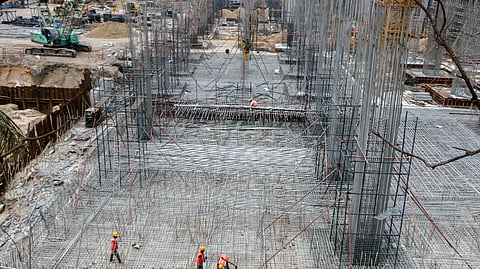

CHENNAI: Not all Chennaiites may have come across the United Nations’ dire warning about the heightened possibility of global temperature crossing the key warming limit of 1.5 degree Celsius in the next five years. But few in the city would have missed the blistering heat last week when Chennai recorded 42.7 degree Celsius, the highest in six years. What if there is a way to make your homes cooler while also reducing energy consumption which affects the environment and your wallet alike?
Experts say green-conscious town planning and building technologies could be a key effort that could help tackle extreme heat in urban areas. To put it simply, the idea is to factor in the effect of development on the environment and plan construction in such a way that buildings use materials and design that keeps the interior cooler and brighter without using cooling and lighting equipment.
Reducing power consumption is an important aspect, considering how the city’s daily demand crossed 4,000 MW for the first ever time, which, Tangedco officials say, was due to the increased usage of air-conditioners.
Some of the features of green buildings are high ceilings, huge windows for ventilation, grey water recycling facilities, renewable energy usage and greening around the buildings. Government Omandurar Multi-speciality hospital was built as a green building and the Greater Chennai Corporation is constructing a green building inside the Ripon Building premises.
But for individuals, it is not a simple choice to make. Even while supporting green buildings as a way to fight climate change, Amir Bazaz, associate dean of the School of Environment and Sustainability, Indian Institute for Human Settlements, also noted that they are more expensive than conventional buildings. To address housing problems and climate change, green buildings should be affordable, he said while addressing a workshop on climate change held in Auroville recently.
Explaining the main constraint against going green, S Ramaprabhu of Builders’ Association of India (BAI) said the construction cost of green buildings is 25 per cent higher than conventional buildings.
“Construction materials for green buildings are coming to India only now. Fixing solar panels, water recycling plants and others would cost extra and maintaining those is also expensive,” he said. Hence, while industries and government departments are moving towards green buildings due to easier access to capital, individuals looking to construct their house are hesitant due to the cost factor, he said.
“Nowadays, there is no space for installing solar panels, as some apartment buildings use terrace as play areas. This is despite government rules mandate solar panels in buildings over 10,000 sqft of area,” Ramaprabhu added.
There are policy measures afoot to promote green buildings. The State government is in the process of amending Tamil Nadu Combined Development and Building Rules to include green building norms. Once amended, it would pave way for green-TDR (transferrable development rights).
Street width, orientation have impact on temperature
Meanwhile, a study conducted in Chennai concluded that width of the streets and their orientation also have impact on temperature.
A recent report released by the World Bank titled ‘Urban Heat in South Asia’ pointed out an assessment on outdoor temperatures and humidity levels in eight neighbourhoods in T Nagar, each with varying orientation, aspect ratio, sky view factor, and proximity to green space.
As per the assessment, the area around Ranganathan Street- Rameshwaram Street reached the highest temperature of 40 degree Celsius, approximately 5.8 degree Celsius higher than other locations during middle of the day. By 10.30 pm, the location cooled down by 5 degree Celsius while all the other locations had cooled down an additional 2 to 4 degree Celsius.
The assessment said streetscape design details such as the narrow streets with a low height-to-width ratio of 1.75, the east-west orientation of the street, and the low sky view factor contribute significantly to temperature differentials in otherwise similar communities, the report added.
It also noted that coating the roof with white colour would reduce indoor temperature than darker colour roof. When sunlight hits a black roof, only five per cent of the heat is reflected while white roof would reflect 80 per cent. Black roof may also increase temperature of air and heat entering the building.
KM Sadhanandh, president of Association of Professional Town Planners, pointed out that the existing town planning rules allows bigger buildings on narrow streets.
“Widening existing streets is a challenge. In 1950, the State government issued a circular mandating minimum road width of 40 feet, except economically weaker section neighbourhood. But after the Town and Country Planning Act, three-storey buildings are permitted on six-metre roads,” he said.
Visit news.dtnext.in to explore our interactive epaper!
Download the DT Next app for more exciting features!
Click here for iOS
Click here for Android